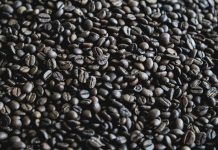Anyone who has just started enjoying espresso has likely heard about crema. It’s something that coffee aficionados are always prattling on about. At least, that’s the way it sounds to the average coffee drinker. And this can make a lot of people want to disregard it as just something else that’s overhyped in the coffee world. However, we’re here to say that crema isn’t overhyped and that it’s very important to enjoying an exceptional espresso.
Okay, now that we’ve gone over the fact that crema is important, let’s take a few moments and discuss what crema is and why it’s important. For those of you who don’t know what crema is, it’s the dark tan foam that foams on top of a shot of espresso. It’s formed when hot water hits the coffee grounds while under pressure. This results in the oils found in the coffee grounds becoming emulsified and then becoming oversaturated with carbon dioxide to make a ton of tiny bubbles. This means that the crema is not only infused with the coffee’s essential oils but that it’s also creamy.
What Affects Crema Formation?
Although we’ve answered the initial question of what is crema, we’ve decided to go ahead and talk a little bit more about the process of crema formation. We want all of our readers to be familiar with the process, so they can use it to the best effect for making their favorite coffee drinks. When it comes to crema formation, the consumer does have a few things that they need to think about. This includes such things as where the beans were harvested, the roast color of the beans, and the type of machine being used. With that said, below are a few things to consider.
How Were The Beans Processed?
The first thing that affects how crema is formed is how the coffee beans were processed. Coffee beans that are naturally dried or semi-washed will retain more of their natural sugars and oils then beans processed in other ways. This means that they will produce more crema than wet-processed beans. Although we’re understating it a little bit to make the concept more relatable to more people, the fact is that African or Brazilian beans are usually the best for crema formation because they tend to use more of a natural or dry bean process. Sumatran beans tend to be wet-processed, so generally speaking, they produce a crema that’s less rich.
The Beans Roast Color
Most people probably realize that the darker the coffee bean, the oilier it is. That’s because roasting it long enough to dark roast the beans causes the oil to be pulled to the surface. This means that darker roasted beans often produce less of a crema than medium or light-roasted beans.
What Type Of Espresso Machine Is Being Used?
The last thing to consider about crema formation is the equipment being used to extract it. The process that produces the best crema is the traditional machines that are used for making espressos. These produce the right combination of pressure and heat to cause proper crema formation. Superautomatic machines produce a lower quality crema because they don’t properly emulsify the oils in the grounds and mix it with CO2. Sure, superautomatic machines are more user friendly, but they just don’t do as good of a job of creating crema as ordinary espresso machines.




















